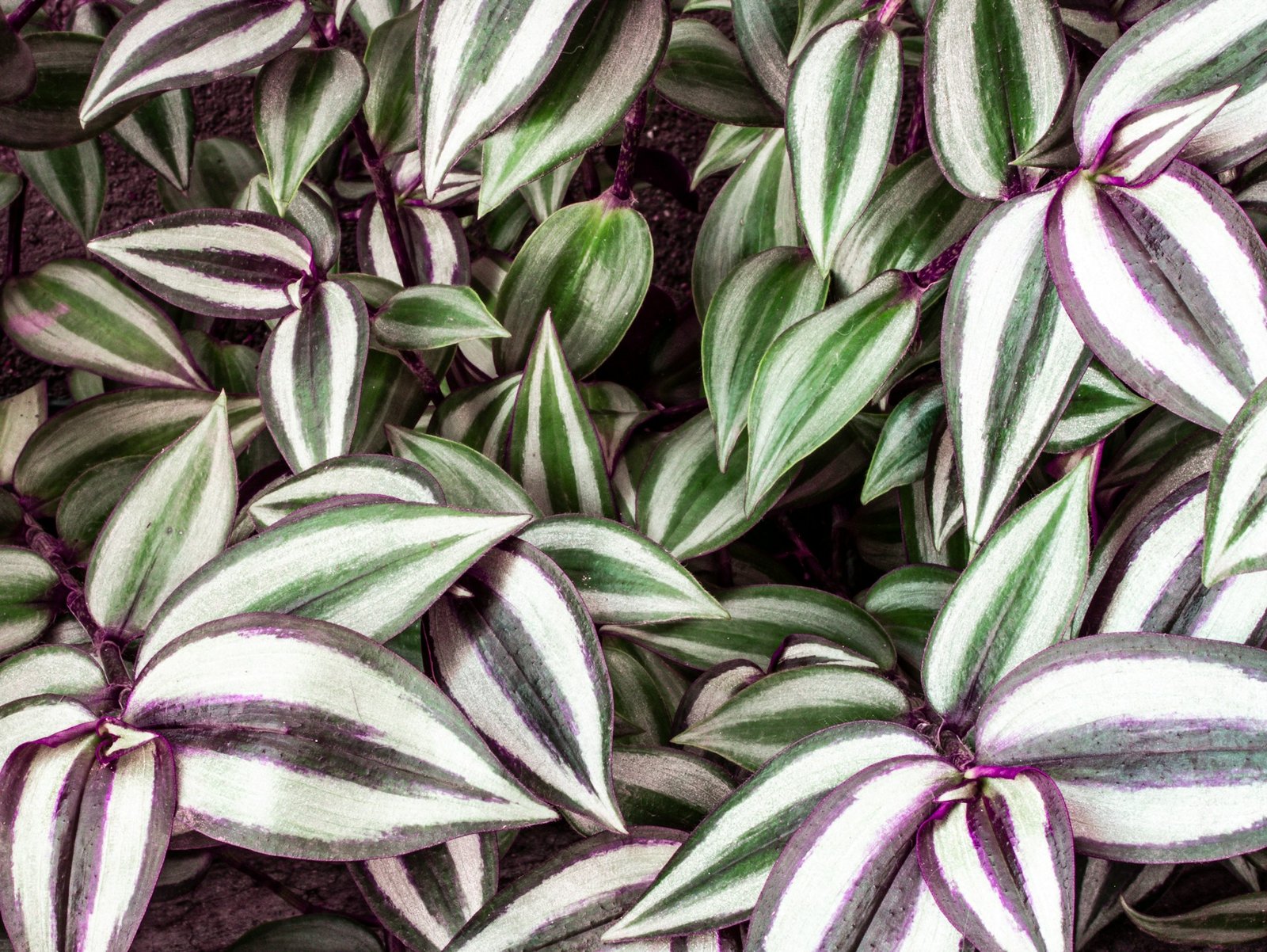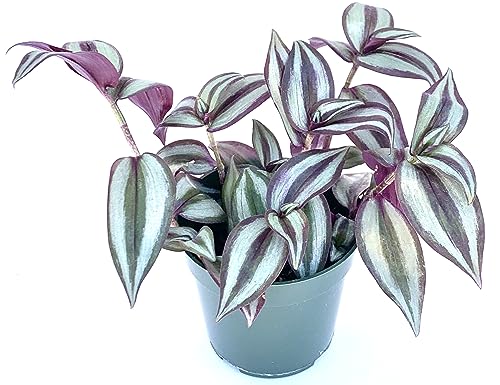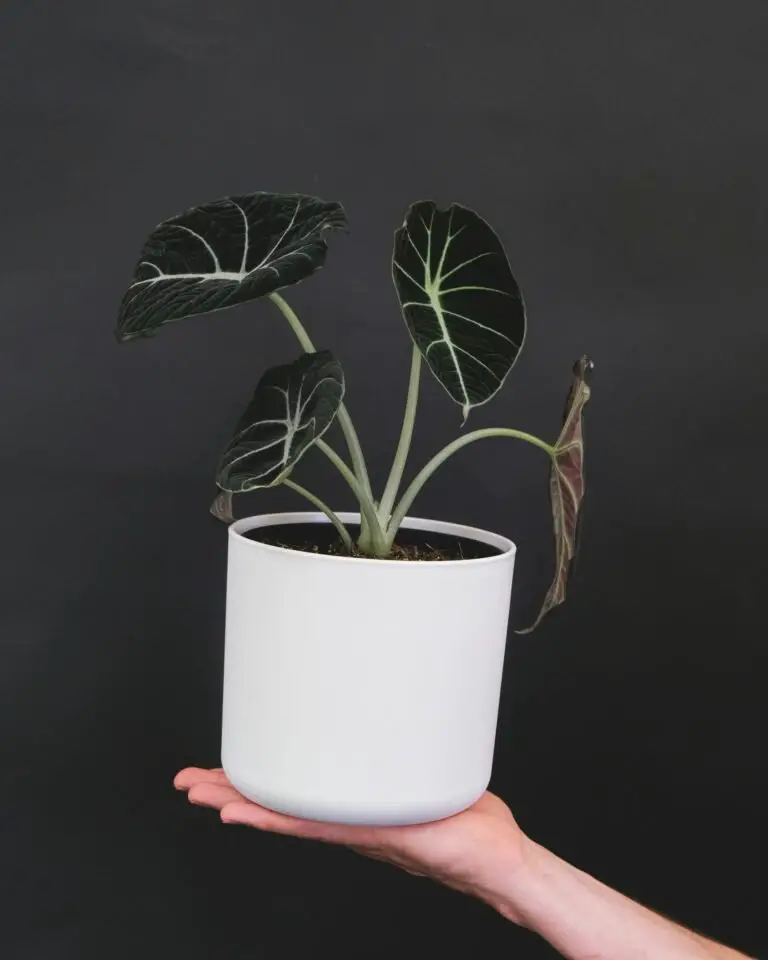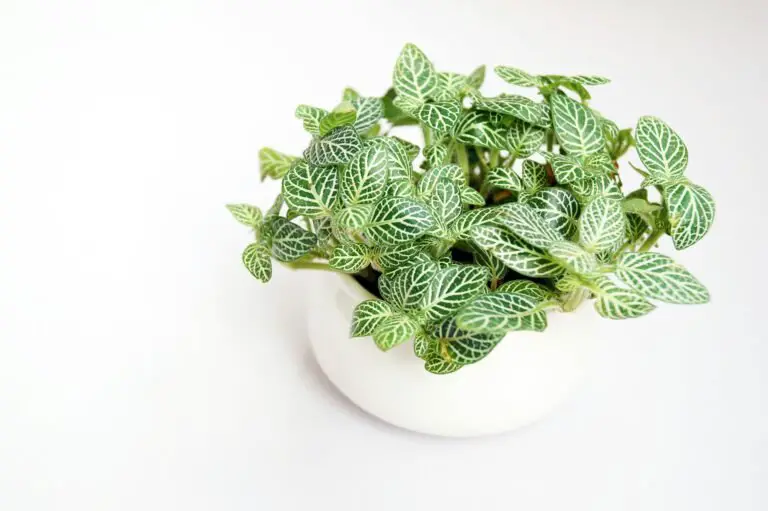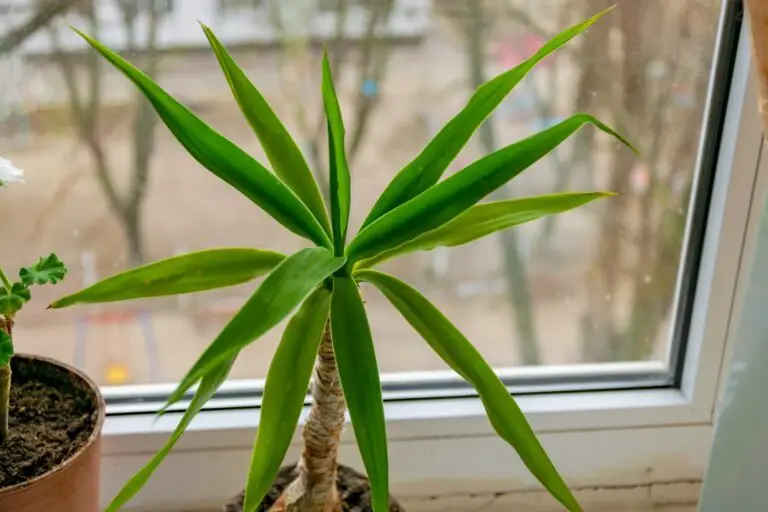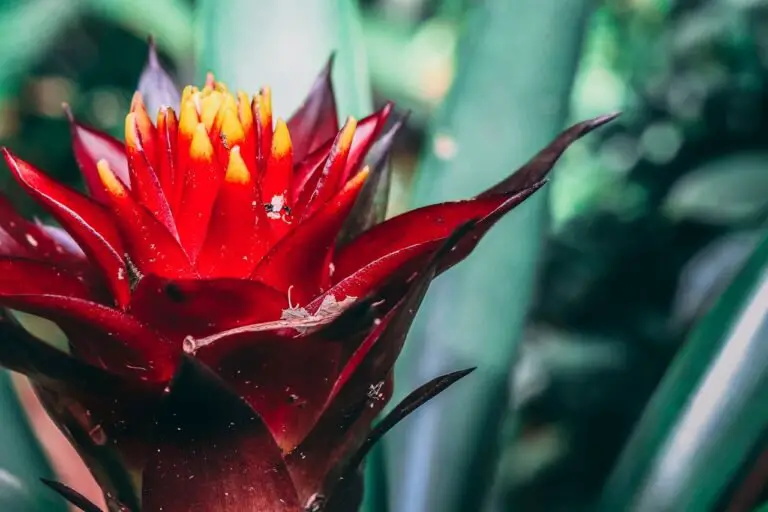Tradescantia Zebrina Care: The Fast-Growing, Silver-Purple Showoff That Never Shuts Up
Some plants are chill, reserved, subtle. Tradescantia Zebrina? Not one of them.
This plant is a total attention-seeker — metallic purple and silver stripes, fast-growing trailing vines, and the kind of bounce-back energy that makes even the most neglectful plant parent feel like a pro.
If you want a houseplant that grows fast, looks fantastic in a hanging pot, and practically dares you to try and kill it… meet your match.
What Makes Tradescantia So Popular?
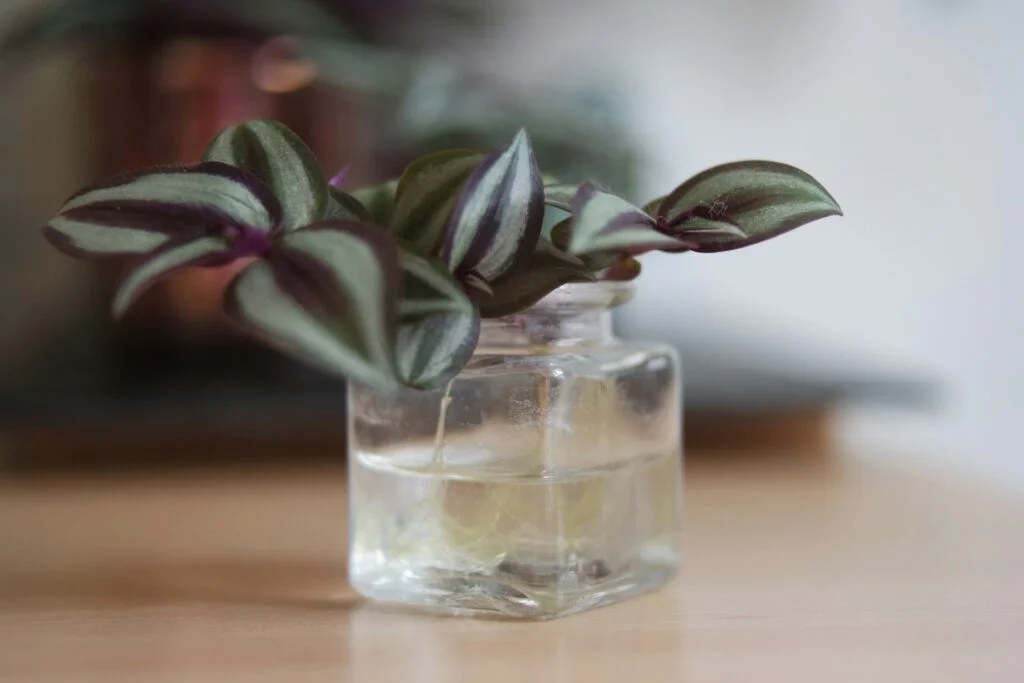
- Electric purple and silver-striped foliage (it literally shimmers)
- Grows like wildfire with just a little care
- Easy to propagate — just snip and stick in water
- Great for hanging baskets, shelves, and indoor jungle vibes
- Tolerates a little neglect (but not too much, okay?)
It’s kind of like the golden retriever of houseplants: friendly, fast, and always doing the most.
1. Light: Brighter = Better Color
Want those purple stripes to pop? It’s all about the light.
- Bright, indirect light is ideal
- Can handle some morning sun, but harsh rays = crispy leaves
- Low light = green leaves, less color, sad plant
If it starts looking plain green or leggy, move it closer to the window. Or give it a pep talk. Whatever works.
2. Water: Stay Consistent, Not Clingy
Tradescantia likes water, but not clingy-relationship-level water.
- Water when the top inch of soil is dry
- Keep it lightly moist, but not soggy
- In winter, let it dry out a bit more between drinks
Too much water = mushy stems and root rot.
Too little = sad, droopy vines and crispy tips.
3. Humidity: Bonus Points If You Care
This plant will survive in regular household humidity just fine — but if you boost the moisture, it’ll show off even more.
- Average indoor humidity? Totally fine.
- Dry air = slightly brown tips
- Extra humidity = lush, bushy growth
Misting is optional. Humidifier? Even better if you’ve got other tropical plants nearby.
4. Soil: Light and Fast-Draining, Please
This plant doesn’t want to sit in wet, heavy soil. Give those roots some breathing room.
Use:
- Indoor potting mix + a bit of perlite or sand
- Or a cactus/succulent blend with a splash of organic matter
- Drainage holes are non-negotiable (seriously)
Soggy roots = fast-track to sadness.
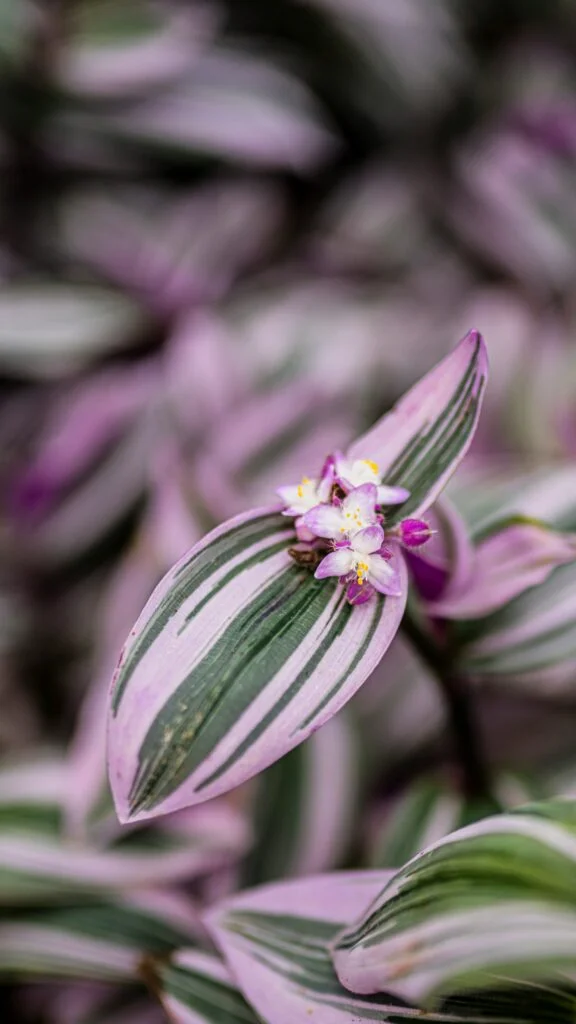
5. Pruning: Snip It Like You Mean It
This plant grows fast. Like, “Wow, you again?” fast.
- Pinch back stems to keep it bushy
- Remove leggy or bare spots
- Regular pruning keeps it full and stops it from getting scraggly
And the best part? Every piece you snip can be rooted and turned into a whole new plant. Unlimited purple stripes.
6. Propagation: Basically Cheating
Propagation is stupid easy. Just cut, water, root, repeat.
How to do it:
- Cut a stem with at least one node (that knobby part)
- Stick it in water or moist soil
- Wait a few days — roots show up fast
- Boom. New plant.
Great for gifts. Or hoarding. No judgment here.
7. Fertilizer: Light Boost in Growing Season
Tradescantia isn’t needy, but it won’t say no to a little snack now and then.
- Use balanced liquid fertilizer once a month during spring/summer
- Dilute it — no need to go full strength
- Skip feeding in winter
Too much = salt build-up = crispy leaves. Less is more.
8. Common Problems (and How to Fix Them)
Leggy growth?
Not enough light. Move it closer to a window.
Brown leaf tips?
Dry air or inconsistent watering. Boost humidity and water on schedule.
Mushy stems?
Overwatering or poor drainage. Repot with fresh soil, cut back rotted bits.
Color fading?
Low light. Tradescantia wants to be seen.
Final Thoughts
Tradescantia Zebrina is loud, proud, and totally fun. It grows fast, looks fabulous, and forgives your occasional plant-parenting mistakes. Just give it bright light, regular trims, and a drink when it asks, and it’ll reward you with silver-purple drama all year round.
Bonus: it’s a plant that literally multiplies itself. What’s not to love?

